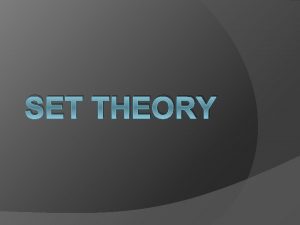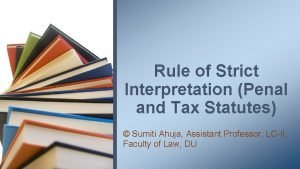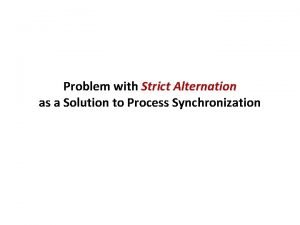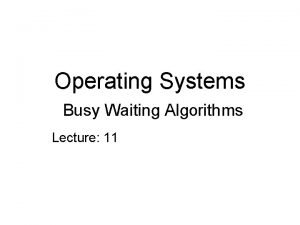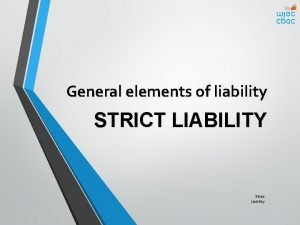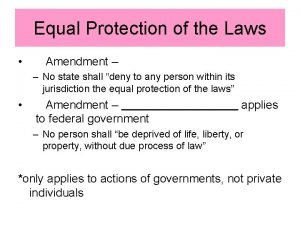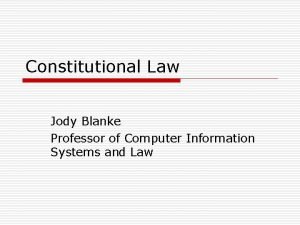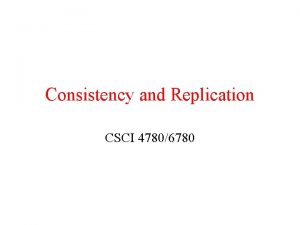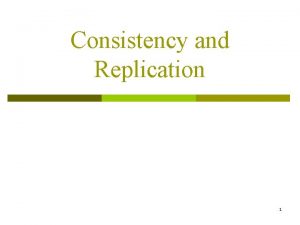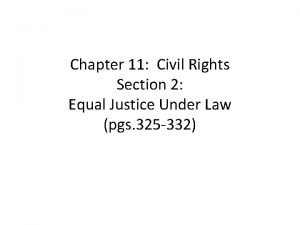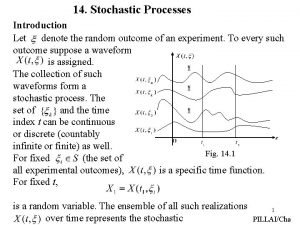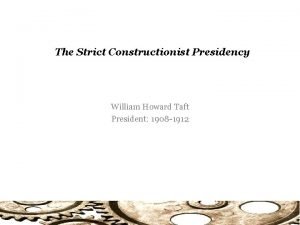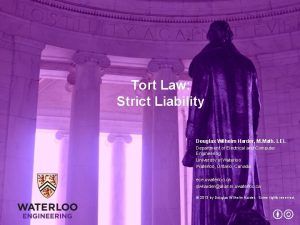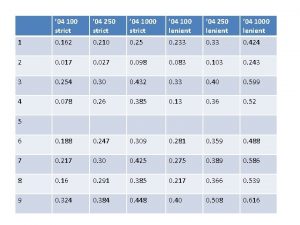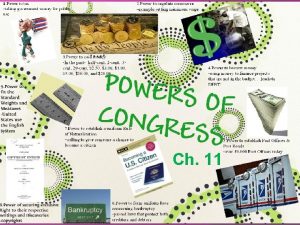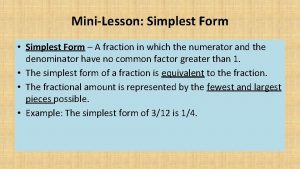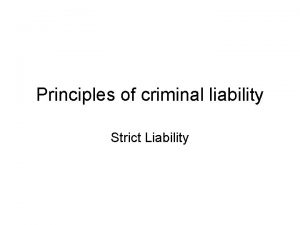Strict Egalitarianism One of the simplest principles of



















- Slides: 19


Strict Egalitarianism • One of the simplest principles of distributive justice is that of strict or radical equality • The principle says that every person should have the same level of material goods and services • The principle is most commonly justified on the grounds that people are owed equal respect and that equality in material goods and services is the best way to give effect to this ideal • The two main problems with this simple principle: 1. the index problem : the construction of appropriate indices for measurement 2. the time frames problem : the specification of time frames • There a number of direct moral criticisms made of strict equality principles

the index problem • The strict equality principle says that there should be ‘the same level of material goods and services’ • The problem is how to specify and measure levels • Two ways of solving the index problem in the strict equality : 1. to specify the same bundle of material goods and services for everyone 2. to specify money as an index for the value of material goods and services

the same bundle of material goods and services for everyone • To specify that everyone should have the same bundle of material goods and services rather than the same level (so everyone would have 4 oranges, 6 apples, 1 bike, etc. ) • The main problem with this solution : there will be many other allocations of material goods and services which will make some people better off without making anybody else worse off • As a consequence : - requiring identical bundles will make virtually everybody materially worse off than they would be under an alternative allocation - so specifying that everybody must have the same bundle of goods does not seem to be a satisfactory way of solving the index problem -Some index for measuring the value of goods and services is required.

money as an index for the value of material goods and services • It is an imperfect index and its pitfalls are welldocumented in most economics textbooks • Moreover, once the goods to be allocated are extended beyond material ones to include opportunities, etc. it needs to be combined with other indices. - For instance, John Rawls' index of primary goods

the time frames problem • to specify when the pattern of distribution is required • One version of the principle of strict equality requires that all people should have the same wealth at some initial point, after which people are free to use their wealth in whatever way they choose. • Principles specifying initial distributions after which the pattern need not be preserved are commonly called ‘starting-gate’ principles • The most common form of strict equality principle specifies that income (measured in terms of money) should be equal in each time-frame. - though even this may lead to significant disparities in wealth if variations in savings are permitted.

the moral criticisms made of strict equality principles • they unduly restrict freedom • they do not give best effect to equal respect for persons • they conflict with what people deserve - conflict with Desert-Based Principles • the most common criticism is a welfare-based one: - that everyone can be materially better off if incomes are not strictly equal

The difference principle • The wealth of an economy is not a fixed amount from one period to the next. More wealth can be produced • The most common way of producing more wealth is to have a system where those who are more productive earn greater incomes • The most widely discussed theory of distributive justice in the past three decades has been that proposed by John Rawls - John Rawls in A Theory of Justice, (Rawls 1971), and Political Liberalism, (Rawls 1993) proposes the two principles of distributive justice • the main criticisms from the difference principle

the main criticisms from the difference principle • Advocates of strict equality argue that inequalities permitted by the Difference Principle are unacceptable even if they do benefit the least advantaged - relative position of the least advantaged is more important than their absolute position • The Utilitarian objection to the Difference Principle is that it does not maximize utility • Libertarians object that the Difference Principle involves unacceptable infringements on liberty. For instance, the Difference Principle may require redistributive taxation to the poor, and Libertarians commonly object that such taxation involves the immoral taking of just holdings. • The Difference Principle is also criticized as a primary distributive principle on the grounds that it mostly ignores claims that people deserve certain economic benefits in light of their actions

resources – based principles • Resource-based principles (also called Resource Egalitarianism) prescribe equality of resources - Interestingly, resource-based principles do not normally prescribe a patterned outcome - the idea being that the outcomes are determined by people's free use of their resources • Resource-theorists claim that the Difference Principle is : a. insufficiently ‘ambition-sensitive’ b. insufficiently ‘endowment-sensitive • The most prominent Resource-based theory, developed by Ronald Dworkin, (Dworkin 1981 a, 1981 b). • The moral criticisms

insufficiently ‘ambition-sensitive” • that provided people have equal resources they should live with the consequences of their choices. - for instance, that people who choose to work hard to earn more income should not be required to subsidize those choosing more leisure and hence less income.

insufficiently ‘endowment-sensitive’ • While part of Rawls' motivation for the Difference principle is that people have unequal endowments, resource-theorists explicitly emphasize this feature of their theory though they differ on which endowments are relevant to questions of distributive justice - They agree that, ideally, social circumstances over which people have no control should not adversely affect life prospects or earning capacities • Some resource-theorists further argue that, for the same sorts of reasons, unequal natural endowments should attract compensation. - For instance, people born with handicaps, ill-health, or low levels of natural talents have not brought these circumstances upon themselves and hence, should not be disadvantaged in their life prospects.

Dworkin’ theory • The peoples begin with equal resources but end up with unequal economic benefits as a result of their own choices. - what constitutes a just material distribution is to be determined by the result of a thought experiment designed to model fair distribution. - Dworkin, add to system of equal resources and ambition-sensitivity, a sensitivity to inequalities in natural endowments. - he notes that natural inequalities are not distributed according to people's choices, nor are they justified by reference to some other morally relevant fact about people. -Dworkin proposes a hypothetical compensation scheme in which he supposes that people do not know their own natural endowments.

The moral criticisms • It is not at all clear what would constitute an implementation of Resource-based theories and their variants in a real economy. • It seems impossible to measure differences in people's natural talents - unfortunately, people's talents do not neatly divide into the natural and developed categories. • A system of special assistance to the physically and mentally handicapped and to the ill would be a partial implementation of the compensation system, but most natural inequalities would be left untouched by such assistance while theory requires that such inequalities be compensated for. • It is simply not clear how to implement equality of resources in a complex economy and hence despite its theoretical advantages, it is difficult to see it as a practical improvement on the Difference Principle.

desert – based principles • that people deserve certain economic benefits in light of their actions. -the various forms of welfarism treat people as mere containers for well-being, rather than purposeful beings, responsible for their actions and creative in their environments. • • The different desert-based principles of distribution differ primarily according to what they identify as the basis for deserving. Most contemporary proposals for desert-bases fit into one of three broad categories: 1. Contribution: People should be rewarded for their work activity according to the value of their contribution to the social product. (Miller 1976, Miller 1989, Riley) 2. Effort: - People should be rewarded according to the effort they expend in their work activity 3. Compensation: - People should be rewarded according to the costs they incur in their work activity. (Sadurski, Lamont 1997)

libertarian principles • For Libertarians, just outcomes are those arrived at by the separate just actions of individuals; a particular distributive pattern is not required for justice. Robert Nozick has advanced this version of Libertarianism (Nozick 1974), and is its most wellknown contemporary advocate. • Nozick proposes a 3 -part "Entitlement Theory“ 1. the principles of justice in acquisition A person who acquires a holding in accordance with the principle of justice in acquisition is entitled to that holding. 2. the principles of justice in in transfer A person who acquires a holding in accordance with the principle of justice in transfer, from someone else entitled to the holding, is entitled to the holding. 3. No one is entitled to a holding except by (repeated) applications of (a) and (b). • The complete principle of distributive justice would say simply that a distribution is just if everyone is entitled to the holdings they possess under the distribution. (Nozick, p. 151)

feminist principles • The distributive principles so far outlined, with the exception of strict egalitarianism, could be classified as liberal theories - they both inform, and are the product of, the liberal democracies which have emerged over the last two centuries. • John Stuart Mill in The Subjection of Women (1869) gives one of the clearest early feminist critiques of the political and distributive structures of the emerging liberal democracies. • His writings provide the starting point for many contemporary liberal feminists. • Feminists who follow Mill believe that a proper recognition of the position of women in society requires that women be given equal and the same rights as men have, and that these primarily protect their liberty and their status as equal persons under the law. • Thus, government regulation should not prevent women from competing on equal terms with men in educational, professional, marketplace and political institutions. • From the point of view of other feminisms, the liberal feminist position is a conservative one, in the sense that it requires the proper inclusion for women of the rights, protections, and opportunities previously secured for men, rather than a fundamental change to the traditional liberal position. • The problem for women, on this view, is not liberalism but the failure of society and the State to properly instantiate liberal principles.

John Stuart Mill : The Subjection of Women (1869) • Mill argued that the principles associated with the developing liberalism of his time required equal political status for women. • The principles Mill explicitly mentions include : 1. a rejection of the aristocracy of birth, 2. equal opportunity in education and in the marketplace, 3. equal rights to hold property, 4. a rejection of the man as the legal head of the household, 5. and equal rights to political participation.

Welfare-Based Principles • Welfare-based principles are motivated by the idea that what is of primary moral importance is the level of welfare of people • Resources, equality, desert-claims, or liberty are only valuable in so far as they increase welfare, so that all distributive questions should be settled according to which distribution maximizes welfare • However, ‘maximizes welfare’ is imprecise, so welfare theorists propose particular welfare functions to maximize. The welfare functions proposed vary enormously both on what will count as welfare and the weighting system for that welfare • Historically, Utilitarians have used the term ‘utility’ rather than ‘welfare’ and utility has been defined variously as pleasure, happiness, or preference-satisfaction. So, for instance, the principle for distributing economic benefits for Preference Utilitarians is to distribute them so as to maximize preference-satisfaction. • The welfare function for such a principle has a simple theoretical form: it involves choosing that distribution maximizing the arithmetic sum of all satisfied preferences (unsatisfied preferences being negative), weighted for the intensity of those preferences.
 Strict egalitarianism
Strict egalitarianism Joint sets symbol
Joint sets symbol Strict interpretation of taxing statutes
Strict interpretation of taxing statutes Strict alternation
Strict alternation Busy waiting in os
Busy waiting in os Strict subset
Strict subset Elements of strict liability
Elements of strict liability Intermediate scrutiny
Intermediate scrutiny Strict scrutiny test
Strict scrutiny test Strict consistency
Strict consistency Strict consistency
Strict consistency Managing medical records chapter 13
Managing medical records chapter 13 Strict scrutiny test
Strict scrutiny test Strict sense stationary
Strict sense stationary Constructionist presidency
Constructionist presidency Strict layering
Strict layering Explanation
Explanation Ballet stances names
Ballet stances names Strict liability
Strict liability Strict liability offences
Strict liability offences

